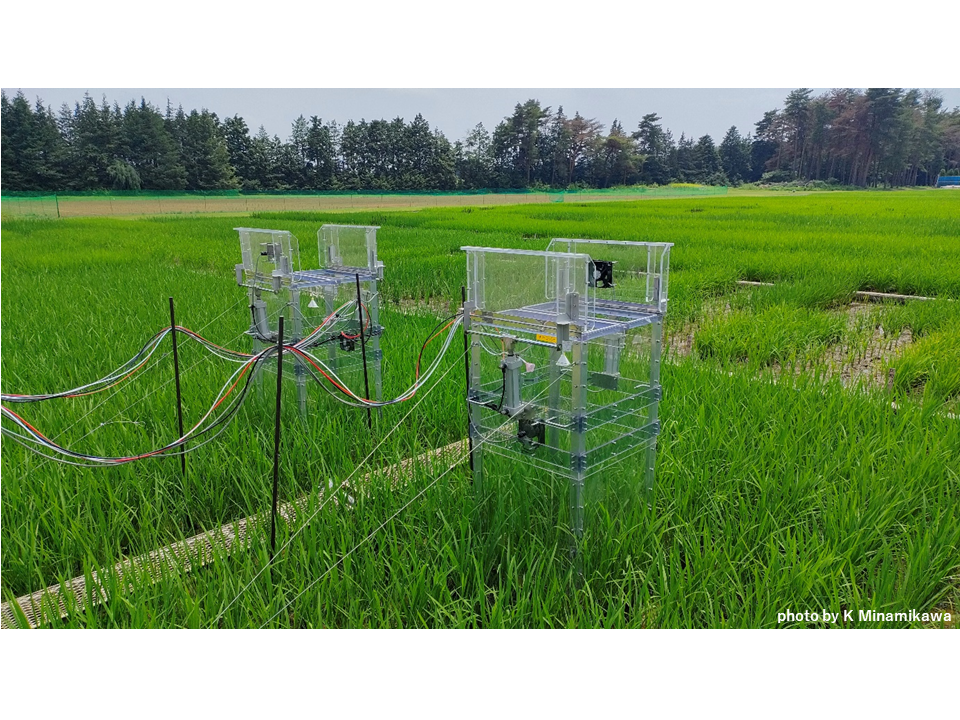Pick Up
869. Revisiting the Mitigation of Greenhouse Gas Emissions from Paddy Fields

869. Revisiting the Mitigation of Greenhouse Gas Emissions from Paddy Fields
Research on greenhouse gas (GHG) emissions from paddy fields and its mitigation started in the 1980s, and a great deal of knowledge has been accumulated so far. Although meta-analyses have achieved success to synthesize fragmentary knowledge, it has been two decades since GHG emissions from paddy fields were comprehensively reviewed. Therefore, JIRCAS together with international research experts, especially those from Nanjing Agricultural University, China, revisited the the mitigation of GHG emissions from paddy fields and published a comprehensive review paper from Nature Reviews Earth & Environment. The following is the summary of the main results.
Paddy fields supply half the global population with staple food, but they also account for ~48% of GHG emissions from croplands. Methane (CH4) accounts for ~94% of these GHG emissions and nitrous oxide (N2O) the remaining. Based on in-situ observations, the global mean area-scaled and yield-scaled GHG emissions are ~7870 kg CO2e ha-1 y-1 and 0.9 kg CO2e kg-1 y-1, respectively. Yield-scaled CH4 emissions have been reduced by 38-55% due to rice yield increase globally in the last four decades. Across a wide range of experimental and environmental factors, organic matter and water management are the most important drivers of global CH4 emissions, whereas fertilizer N application rate is the most important driver of N2O emissions. Paddy CH4 emissions are projected to increase by 4-40% under elevated atmospheric CO2 concentration and by 15-23% under warming. Breeding strategies of modern high-yielding rice cultivar can reduce GHG emissions from paddy fields. New rice variety, non-continuous flooding, and straw removal strategies reduce GHG emissions by 24%, 44%, and 46% on average, respectively. However, optimization of any single practice has limited potential of GHG mitigation and rice yield improvement. Integrated agronomic management (i.e., cultivar, water, organic matter, nitrogen, and tillage) should be optimized based on seasonal CH4 emission patterns in main rice growing regions. Future research should (1) quantify the interactions between integrated practices (e.g., water × straw), (2) pursue long-term changes in soil organic carbon vs. GHG emissions, (3) assess the quality and credibility of previous meta-analyses, and (4) unravel the functional linkage between GHG emissions and soil microorganisms.
JIRCAS is carrying out various research activities regarding the development and dissemination of integrated agronomic management that centers on water management (intermittent irrigation) targeting at paddy fields in the Asia-Monsoon region which covers ~90% of the global paddy area. These activities will contribute to the mitigation of GHG emissions from paddy fields and eventually climate change mitigation.
Reference
Qian, H., Zhu, X., Huang, S., Linquist, B., Kuzyakov, Y., Wassmann, R., Minamikawa, K., Martinez-Eixarch, M., Yan, X., Zhou, F., Sander, B.O., Zhang, W., Shang, Z., Zou, J., Zheng, X., Li, G., Liu, Z., Wang, S., Ding, Y., van Groenigen, K.J., Jiang, Y. (2023) Greenhouse gas emissions and mitigation in rice agriculture. Nature Reviews Earth & Environment. doi: https://doi.org/10.1038/s43017-023-00482-1
Contributor : MINAMIKAWA Kazunori (Crop, Livestock and Environment Division)
